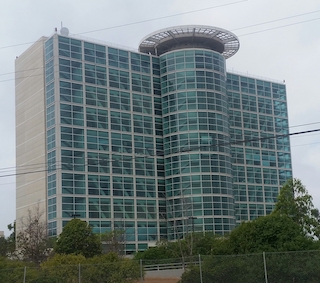As the reader of this article may already be aware, the admission of “testimonial” hearsay against defendant in a domestic violence case is improper under the confrontation clause of the Sixth Amendment unless two requirements are met. First, the declarant of the statement must be unavailable to testify at trial. Second, defendant must have had a prior opportunity to cross-examine the declarant. These are the requirements established by the U.S. Supreme Court in Crawford v. Washington (2004) 541 U.S. 36, 124 S. Ct. 1354, 158 L. Ed. 2d 177.
In a Nutshell: Testimonial hearsay includes prior testimony at a preliminary hearing, testimony before a grand jury, testimony in a prior trial and answers to a police interrogation when there was no ongoing emergency.
However, Crawford did not offer a rigorous definition of “testimonial” hearsay. Instead, it commented, “[w]hatever else the term covers, it applies at a minimum to prior testimony at a preliminary hearing, before a grand jury, or at a former trial; and to police interrogations.” Id., 541 U.S. at 68.
Two years later, in
Davis v. Washington (2006) 547 U.S. 813, 126 S. Ct. 2266, 165 L. Ed. 2d 224, a consolidation of two domestic violence criminal cases, the U.S. Supreme Court addressed what type of victim statements during police interrogations qualify as “testimonial.” It stated:
“Statements are nontestimonial when made in the course of police interrogation under circumstances objectively indicating that the primary purpose of the interrogation is to enable police assistance to meet an ongoing emergency. They are testimonial when the circumstances objectively indicate that there is no such ongoing emergency, and that the primary purpose of the interrogation is to establish or prove past events potentially relevant to later criminal prosecution.”
In Davis, supra, the Supreme Court held that victim statements during an emergency call to a 911 operator were not “testimonial,” so the tape recording could not be heard by the jury without violating defendant’s Sixth Amendment confrontation clause rights. Id., 547 U.S. at 826-829.
 Airport Courthouse
Airport Courthouse
In contrast, in the companion case to Davis, Hammon v. Indiana, the victims’ statements to an investigating officer who arrived on scene after a domestic violence altercation had ended and the emergency had passed were found to be testimonial. Id., 547 U.S. 829 – 830.
After Crawford, “nontestimonial” hearsay statements (like a 911 call) continued to be governed by the Roberts standard. Ohio v. Roberts (1980) 448 U.S. 56, 100 S. Ct. 2531, 65 L. Ed. 2d 597. Roberts permits hearsay evidence to be admitted in criminal cases as long as the statement falls within a traditional, codified hearsay exception (i.e., one listed at Evid. Code §§ 1220 – 1380) or it was particularly trustworthy, as determined by the judge.
If a statement is considered “testimonial,” however, the Crawford standard must be met.
Therefore, the focus now is on whether a witness is “unavailable” and what is “an opportunity to cross-examine.”
For example, in People v. Cage, the California Supreme Court had to apply all these tests. People v. Cage (2007) 40 Cal.4th 965, 56 Cal. Rptr. 3d 789. In this case, a teenage assault victim made statements in a hospital emergency room to both a police officer and a surgeon. In response to focused police questioning, he told the police officer that his mother had slashed him with a shard of glass. The Supreme Court held that the primary purpose of the questions, objectively considered, was not to deal with an ongoing emergency, but to investigate the circumstances of the crime and thus, the victim’s hearsay statements were “testimonial.” Id., 40 Cal. 4th 984-986.
It merits mention that the Supreme Court found the same victim’s statement to the surgeon was nontestimonial when the surgeon asked him, “What happened?” The Court found that the primary purpose of the surgeon’s question, objectively considered, was not to obtain proof of a past criminal act, or the identity of the perpetrator, for possible use in court, but to deal with a contemporaneous medical situation requiring information about the mechanism of injury. Id. 40 Cal. 4th at 986-992.
In People v. Johnson (6th App. Dist., 2007) 150 Cal. App. 4th 1467, 1477-1480, 59 Cal. Rptr. 3d 405, Davis was applied to admit the hearsay statement of a prior victim of domestic violence. Johnson was charged with domestic violence and the prosecution sought to admit the statement of a victim through the testimony of a police officer who responded to Johnson’s house. The officer came to the house and Johnson answered the door. His hands were covered in blood. The officer could hear a woman screaming and so he went back to a bathroom, where he found the woman. He asked her “what happened?” She explained that Johnson had beat her up. The victim’s statement was considered nontestimonial and admissible because it was in the context of an emergency due to the screaming and defendant’s blood-covered hands. Id. , 150 Cal. App. 4th 1479. The hearsay statements were not considered testimonial, so they were admitted without having to pass the “Crawford” test.
Another case, coincidentally also involving a person named Mr. Johnson is People v. Johnson (1st App. Dist., 2010) 189 Cal. App. 4th 1216, 1225-1226; 117 Cal. Rptr. 3d 132. In this 2010 case, the victim called 911 as she was fleeing her husband, who had shot at her. The hearsay statements also were not considered testimonial, so they were admitted without having to pass the “Crawford” test. Id., 189 Cal. App. 4th 1226.
For more information about exceptions to the hearsay rule, please click on the following articles:
 Airport Courthouse
Airport Courthouse